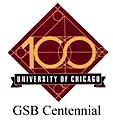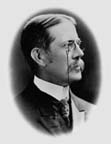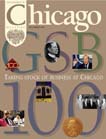The University of Chicago Magazine
December 1997

![]()
"It remains to be seen whether the School can successfully walk the fine line and not become another department of economics or, alternatively, a management consulting firm with low fees," commented U of C President Lawrence A. Kimpton in his 1957 State of the University address. "We feel about our Business School and indeed all business schools as the New Englander did about his ailing wife when he remarked, 'I sure hope Nellie gets well soon or something.'"
Forty years after Kimpton's comment, the school that Hoffman termed "a notable pioneering venture" has amply confirmed its place in American higher education, firmly establishing itself at the forefront of the nation's more than 280 accredited graduate business schools. Members of the GSB faculty-five of whom have won Nobel Prizes-have made major scholarly contributions in areas such as finance, behavioral decision making, and the economics of regulation. Business school professors also advise the banks and federal institutions that determine the course of the nation's economy. More than one-quarter of the University's 119,000 living alumni have matriculated at the GSB, and they've gone on to head international corporations, to found their own enterprises, and to become scholars and policymakers. In other words, the Graduate School of Business has a lot of reasons to celebrate its 100th birthday-a yearlong observance that will include on-campus exhibits, business conferences, and alumni parties, with a grand finale planned for October 1998.
The U of C's business school came to life as the brainchild
of one James  Laurence Laughlin, an original member of the
University faculty and the first head of the department of political economy.
Believing that "the rise of economic, social and political problems,
together with the phenomenal industrial development of our country, demands
that training should be given fit to deal with them," Laughlin took
his convictions to the University Senate, and in autumn of 1898, the College
of Commerce and Politics was born.
Laurence Laughlin, an original member of the
University faculty and the first head of the department of political economy.
Believing that "the rise of economic, social and political problems,
together with the phenomenal industrial development of our country, demands
that training should be given fit to deal with them," Laughlin took
his convictions to the University Senate, and in autumn of 1898, the College
of Commerce and Politics was born.
Only the second collegiate business school in the country-it was preceded by the University of Pennsylvania's Wharton School in 1881-the new undergraduate college had neither dean nor faculty, instead drawing its classes and professors from the departments of political economy, sociology, political science, and history.
Housed in Cobb Hall for its first 25 years, the college changed its name after just two, becoming the College of Commerce and Administration in 1900. Two years after that, it underwent a more comprehensive reorganization, as both de facto dean Laughlin and President William Rainey Harper believed that, lacking a strong identity, the college had not made sufficient progress. Henry Rand Hatfield became the college's first dean; the college also acquired its own faculty members and a new curriculum that featured classes with titles such as "Technique of Trade and Commerce" and "Commercial Geography."
But the man who truly shaped the business school's philosophy was Leon Carroll Marshall, its fourth dean (190924) and seemingly the GSB's equivalent of Robert Maynard Hutchins, providing the school with a lasting vision. Marshall-who described business as falling "little short of being as broad, as inclusive, as life itself, in its motives, aspirations, and social obligations"-established a discipline-based approach designed to provide students with fundamental knowledge in a variety of fields and give them an understanding of the "basic processes," "institutional life," and "driving forces" of business. Also emphasizing the importance of research, the dean assembled a faculty that included economist Paul H. Douglas, later a U.S. senator; Charles O. Hardy, who first conceptualized risk-bearing as a management function; James O. McKinsey, founder of the management-consulting firm McKinsey and Company; and finance expert Theo-dore O. Yntema, AM'25, PhD'29, later a U of C trustee. Under Marshall, in 1916 the College of Commerce and Administration became the School of Commerce and Administration, with a separate budget and the power to grant advanced degrees: first the M.A., and later the Ph.D.
The two decades following Marshall's term saw many innovations. The school changed its name again, this time to the School of Business, and moved into Haskell Hall. The nation's first scholarly business journal-titled, appropriately enough, The Journal of Business-was introduced in 1928, and the M.B.A. degree was first awarded in 1935. By 1942, the School of Business had begun the transition to being strictly a graduate school, a process that took eight years to complete. In 1943, again ahead of the national curve, the School of Business launched its executive program, offering a modified M.B.A. program for experienced businesspeople. The downtown program for part-time students followed.
The postWorld War II years saw some tough times, with low enrollment, the loss of faculty members who did not return after wartime service in military and civil sectors, and tight resources. The 1950s did witness the launch of an important GSB tradition, the annual Management Conference, but budget problems beset the school throughout most of the decade.
More A Centennial Report
Also:
Pathbreaking Work - Eyes on the Prize - Selling Points
An Enterprising Spirit - Centennial Facts and Figures
